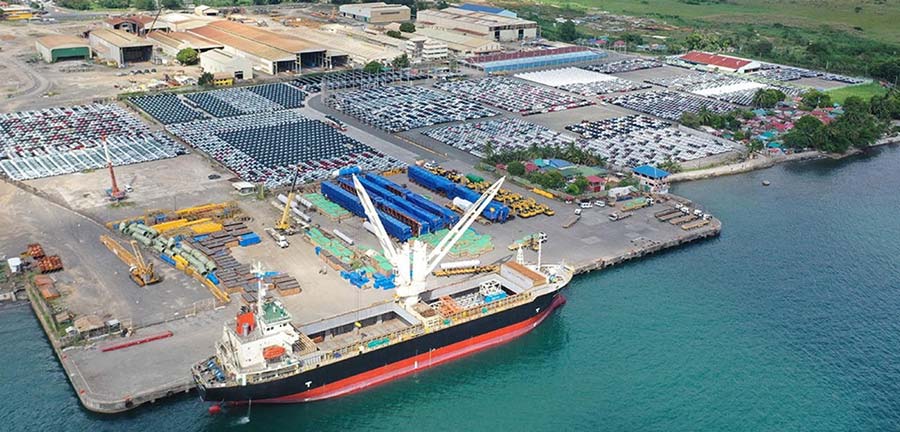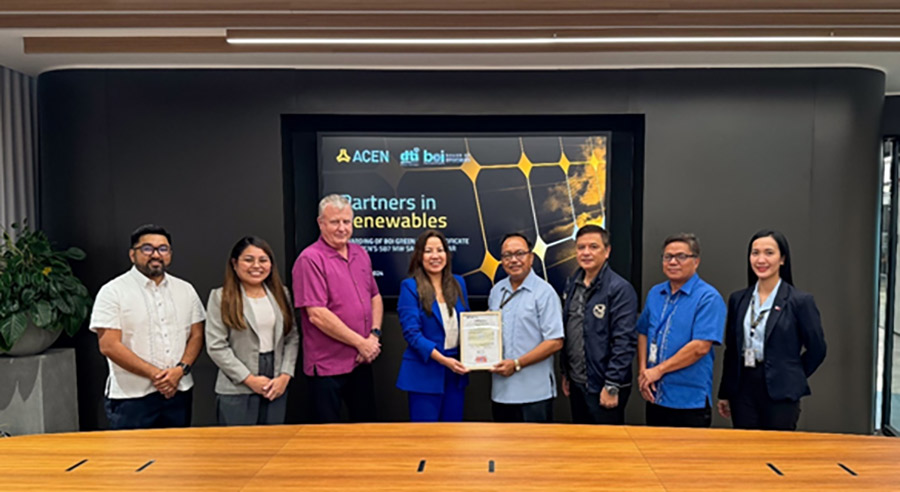International Container Terminal Services Inc. (ICTSI) said its Bauan terminal project is on schedule for completion by 2028.
The Razon-led port operator said in a statement yesterday it is making strides in its initial works to develop Luzon International Container Terminal (LICT) with environmental sustainability in mind.
“Beyond expanding capacity, LICT is expected to support the Philippines’ renewable energy goals, particularly in Southern Luzon. With the country shifting toward cleaner energy, the new terminal will meet growing demand for efficient and eco-friendly marine handling solutions in the region,” ICTSI said .
“We’re proud to drive positive change at home by developing a world-class port capable of handling the largest container vessels. This boosts our capacity and helps lead the shift toward a more sustainable shipping industry. Our new Bauan terminal’s ability to accommodate large ships sets it apart and positions us as a leader in efficient and eco-conscious trade. At the end of the day, if a terminal is unable to handle larger vessels, it’s also unable to fully embrace the new technologies leading to a sustainable future,” said Nathan Clarke, ICTSI vice president and head of global engineering for infrastructure and project delivery.
At a project cost of $800 million announced in May, LICT will be the largest privately-funded marine terminal investment in the Philippines.
“It is set to become the country’s second largest container facility after the Manila International Container Terminal (MICT),” ICTSI said.
The company said design and engineering studies are underway, with construction set to begin in early 2025. LICT’s first berth is scheduled for completion by the end of 2027.
“Every aspect of the terminal’s design and construction will prioritize environmental responsibility. The project will follow strict environmental guidelines to minimize disruption to the local ecosystem,” ICTSI added.
The Bauan Port is a roll-on/roll-off and project cargo terminal serving Calabarzon’s automobile and construction industries. Located approximately 120 kilometers south of Manila and 9 kilometers west of Batangas City, facing the Batangas Bay, the terminal is within a natural cove and is protected from adverse weather conditions by several islands, which are clearly visible from the bay.
Upon completion, the Bauan terminal will feature up to 900 meters of quay and at least eight ship-to-shore gantry cranes and an estimated capacity of over 2 million twenty-foot equivalent units (TEU) per annum, ICTSI said.
A key feature of the Bauan terminal is its ability to handle mega ships, a growing trend in global shipping aimed at increasing efficiency and reducing environmental impact.
“One of the main advantages of mega ships is that they help reduce the number of vessels at sea by transporting more cargo in fewer trips. This leads to lower fuel consumption, reduced greenhouse gas emissions, and less congestion on shipping routes. For example, ultra-large container ships carrying over 20,000 containers emit less carbon per container compared to smaller vessels, making them a more sustainable option for global trade,” ICTSI said.
“Mega ships, like those that will use LICT, are also adopting green technology to further reduce their environmental impact. Many of these ships have energy-efficient engines, streamlined hull designs to reduce drag, and use cleaner fuels such as liquefied natural gas (LNG). These advancements help lower emissions and comply with international regulations like IMO 2020, which limits sulfur content in marine fuels,” it added.
ICTSI said LICT represents its commitment to innovation and sustainability.
“By accommodating mega ships and integrating eco-friendly practices, ICTSI is supporting both economic growth and environmental responsibility,” it said.
“Once completed, the LICT terminal will strengthen the Philippines’ position in global trade and serve as a model for sustainable shipping. This project shows that progress and environmental protection can go hand in hand, setting a standard for the future of the maritime industry,” the company added.





